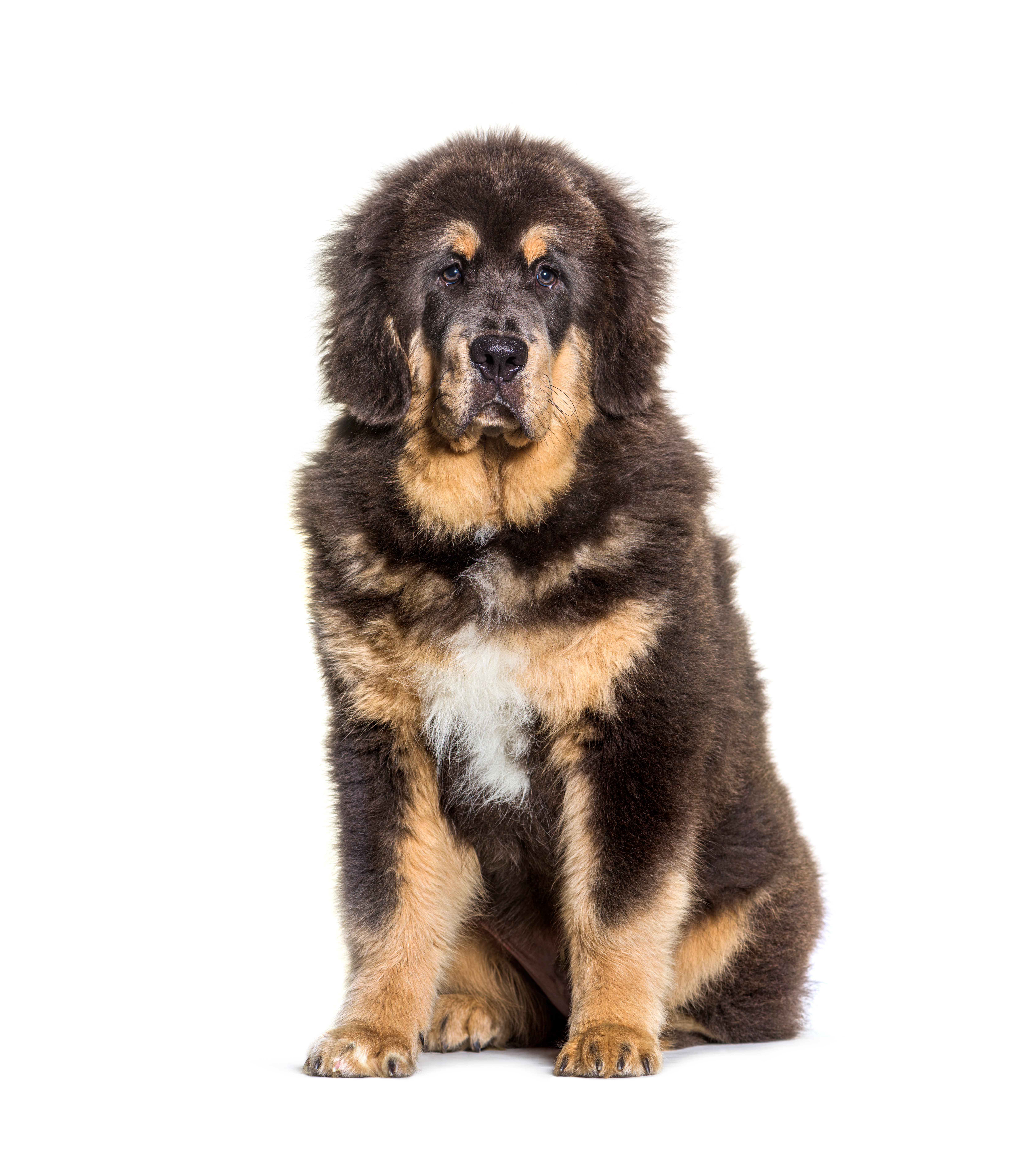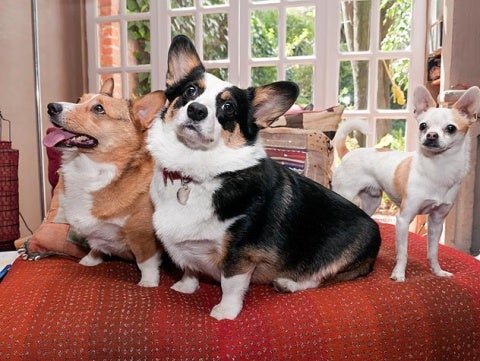Tibetan Mastiff
Tibetian Mastiffs have the heart—and the mane—of a fluffy lion. A giant dog, slightly longer than they are tall, the Tibetan Mastiff is a powerful, muscular breed that is athletic and agile, with a dignified composure. Their dense coat is quite long, consisting of hair that stands off from the body and is more prevalent in males. Their tail is thickly coated and the hind legs are feathered on the upper parts.
Breed characteristics carousel
Learn More
Need to Know
- Suitable for experienced owners
- Extra training required
- Generally healthy breed
- Enjoys active walks daily
- Can be left alone occasionally with training
- Some drool
- Requires regular grooming
- Quiet dog but will bark, alert, and may be physically protective
- Might not like other dogs
- May need additional training to live with other pets
- May need additional supervision to live with children
- Needs a large yard, best suited to suburban or rural areas
- AKC Registered Breed

Personality
Tibetian Mastiffs have hard shells but are warm, calm, loyal, and affectionate with their owners. A guard dog through and through, the Tibetan Mastiff is wary of strangers and naturally protective of their family and property. They are often independent and strong-willed. Proper socialization is essential so that they can get along well with others.
Thought to date back 3,000 years in the Himalayan Mountains, the Tibetan Mastiff is one of the world’s oldest breeds and was used as a guard dog, protecting properties as well as entire villages and livestock. The Tibetan Mastiff was first brought to London in 1847 from their native country when the Viceroy of India sent one to Queen Victoria. They later gained greater exposure when the Prince of Wales imported two in 1874. They first came to the U.S. in the 1950s but didn’t gain moderate popularity until the 70s and 80s.
This huge breed needs owners who have a lot of experience with giant dogs. You will need to be ready to manage your dog carefully so that interactions are peaceful and positive. Owners should be prepared to train these sentinel dogs sensitively and to a high standard. They are not inherently dangerous dogs but they can be powerful and territorial. Ideal owners will have a large house, no (or remote) neighbors, a very securely fenced yard, and access to quiet walks where few other people will be or where it is possible to remain distanced from others. Tibetan Mastiffs are suited for those with older teenage children or a child-free home.
Daily exercise is required for Tibetan Mastiffs. However, younger dogs should not be overexercised, as it is important to avoid putting strain on the muscles and joints of such a large, growing breed. As a guarding breed, they are happiest outdoors.
This breed needs a large house where they can stretch out and roam comfortably. A well-fenced property with plenty of space to wander around freely is also necessary to keep them happy, healthy, and safe.
The Tibetan Mastiff looks like a small bear, with a double coat consisting of a dense, wooly undercoat that sheds in warmer weather and a thick topcoat that is straight and hard-textured. The tail and back legs are feathered. A brush through a couple of times a week will do it, with daily grooming required when the coat sheds. When it comes to bathing, Tibetan Mastiffs require bathing as frequently as weekly, or up to no longer than every 6 weeks, depending on their environment and how dirty they get. You should also be aware that bathing and drying a Tibetan Mastiff is no easy task, due to the considerable size and thickness of their coats. Professional grooming may be advisable.
Tibetan Mastiffs can be resistant to training but they do need to be taught to walk on a leash so they can get the exercise they need, especially if they don’t have a fenced-in yard available. Making training more fun for them goes a long way. Sessions should be short and frequent with a lot of verbal encouragement as well as positive reinforcement. Early socialization with people and other dogs is vital.
The cost of a Tibetan Mastiff from a breeder is significantly more than the cost of adopting one from a local shelter or rescue. The adoption fee usually covers additional items such as spaying or neutering, vaccines, and microchipping.
Adopting a Tibetan Mastiff
Interested in adopting a Tibetan Mastiff? Here are answers to some common questions about bringing one of these dogs home.
Tibetan Mastiffs can be aggressive when provoked, as they might feel protective if they perceive a threat from strangers. However, with proper socialization and training, they rarely show any signs of aggression.
One of the most important things to know before getting a Tibetan Mastiff is that because of their huge size, they are not suitable for small spaces. The grooming process takes a lot of sweat equity or high groomer bills as they take a long time to bathe and dry properly.

Learn more about feeding and caring for your Tibetan Mastiff on Purina.
Did You Know?
- The Dalai Lama had eight Tibetan Mastiffs guarding his summer residence at Norblinka.
- The heaviest Tibetan Mastiff in the world lives in Tibet and weighs around 250 pounds.

